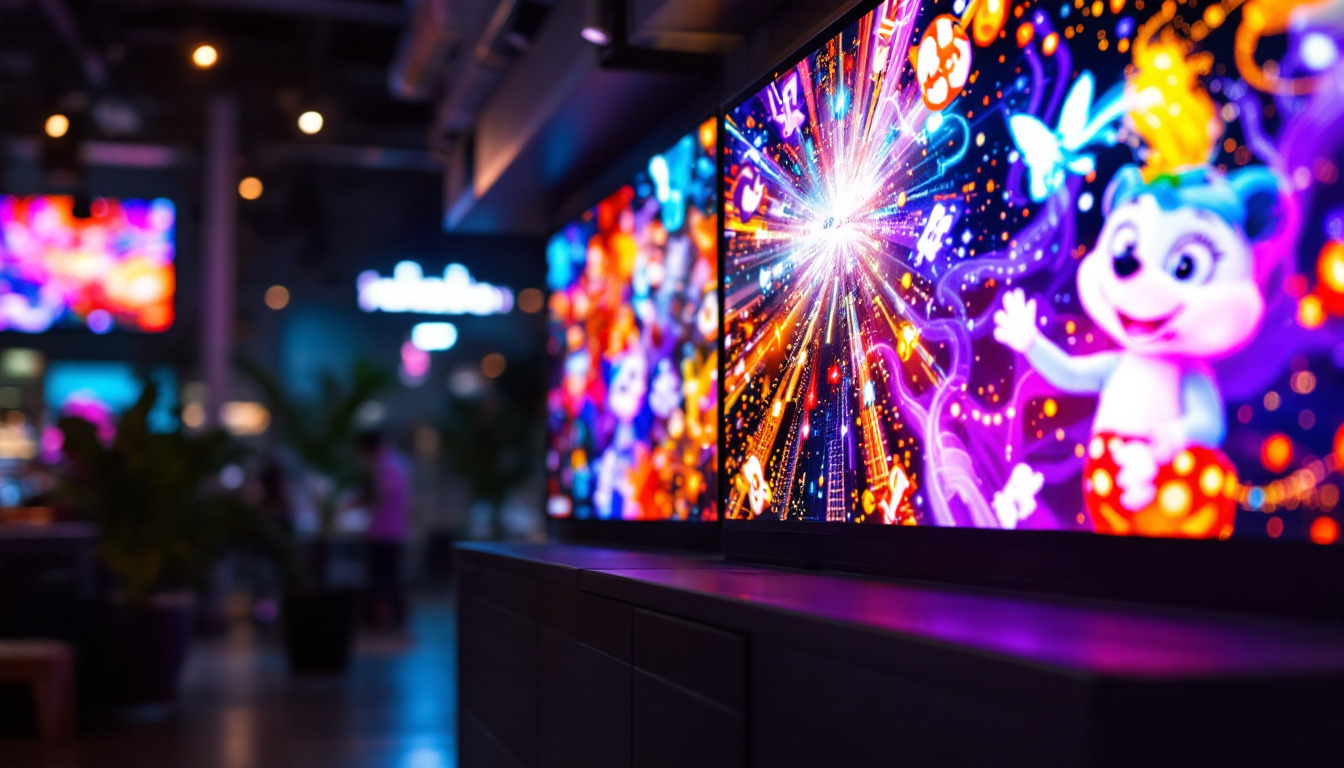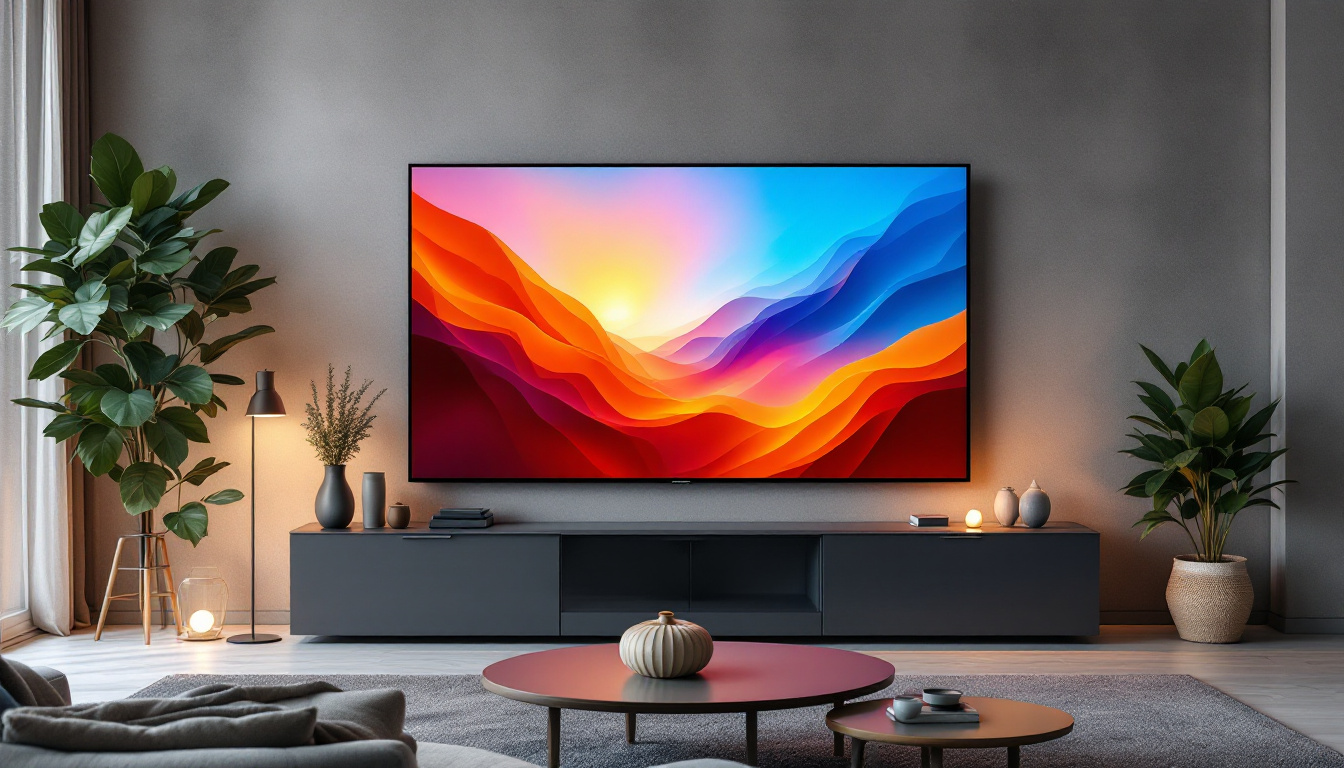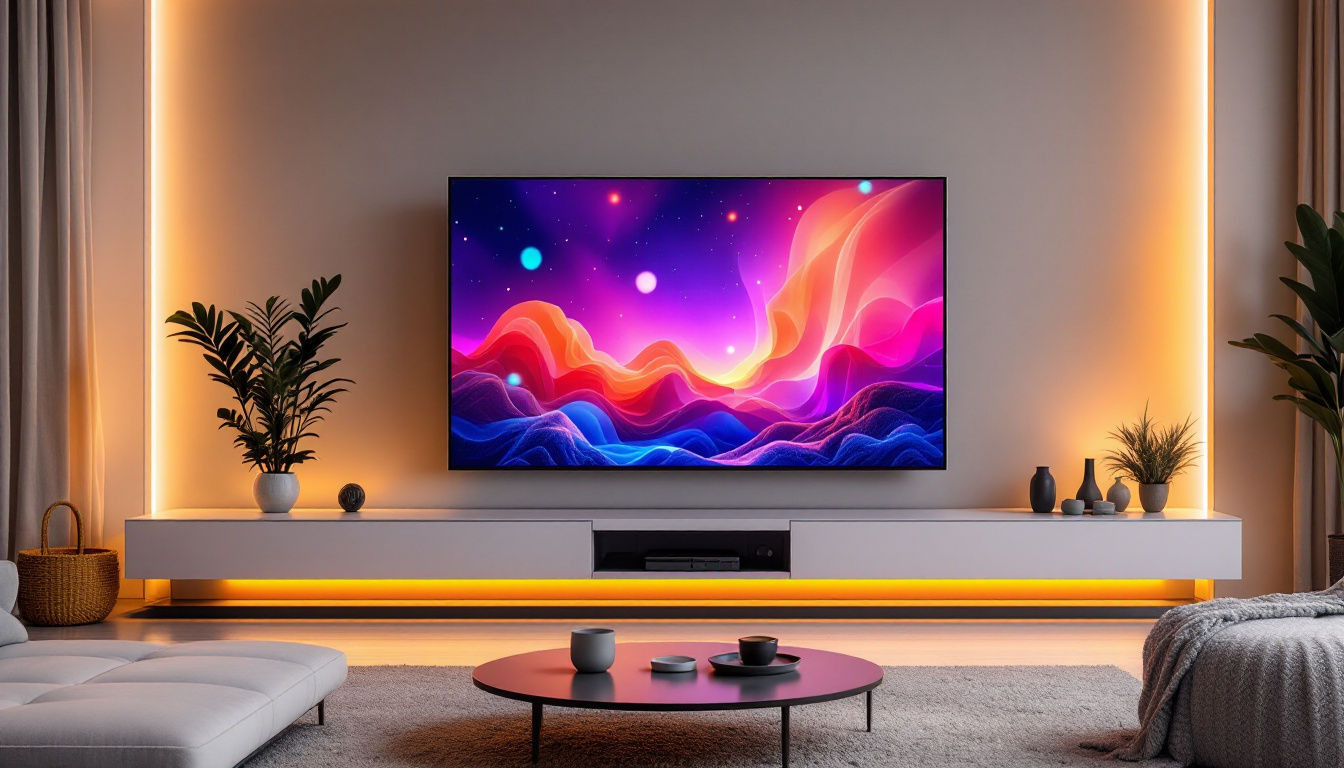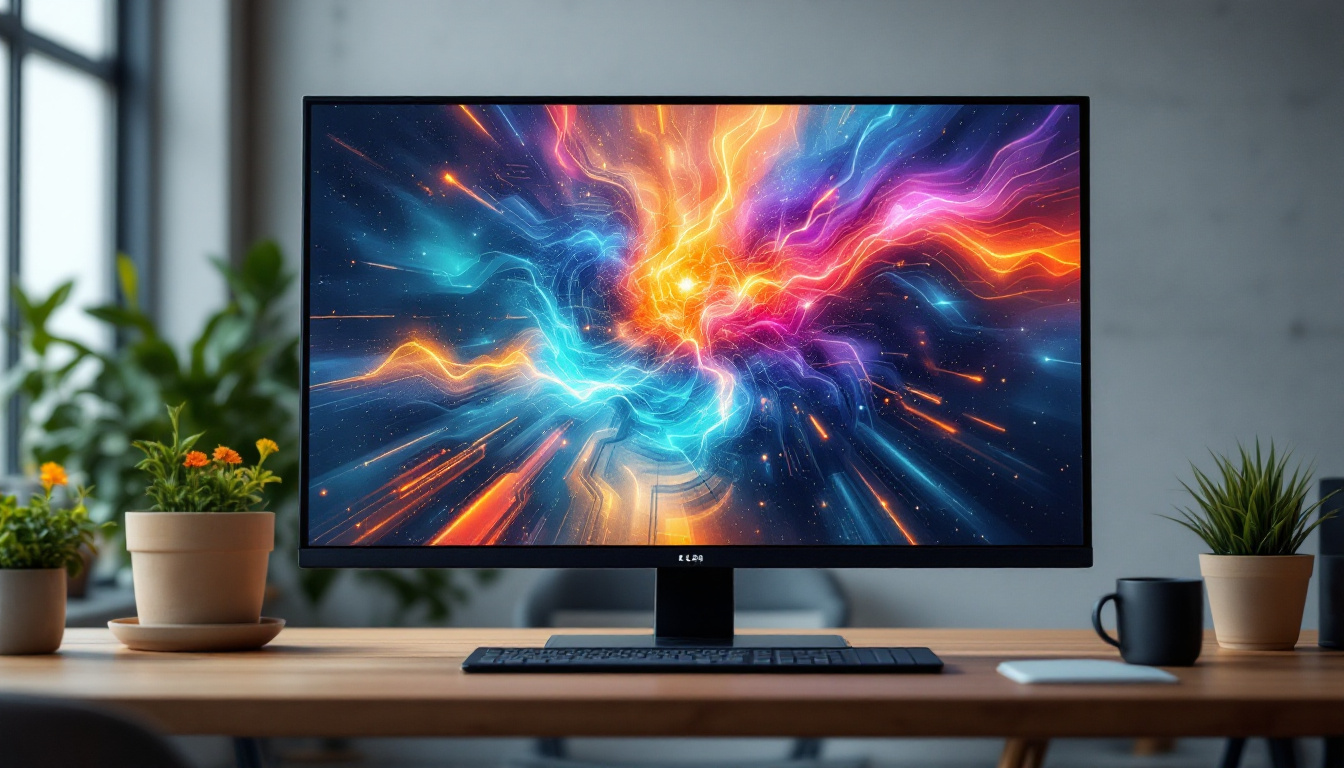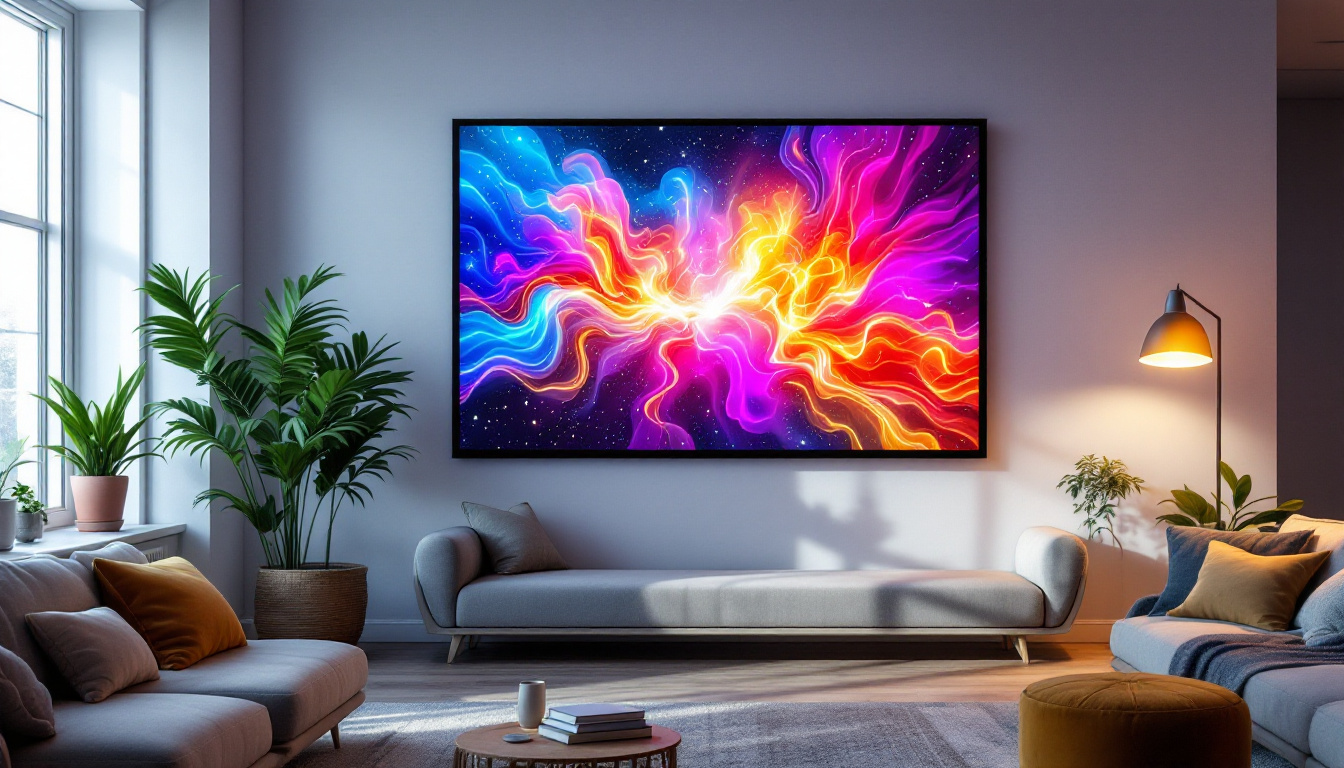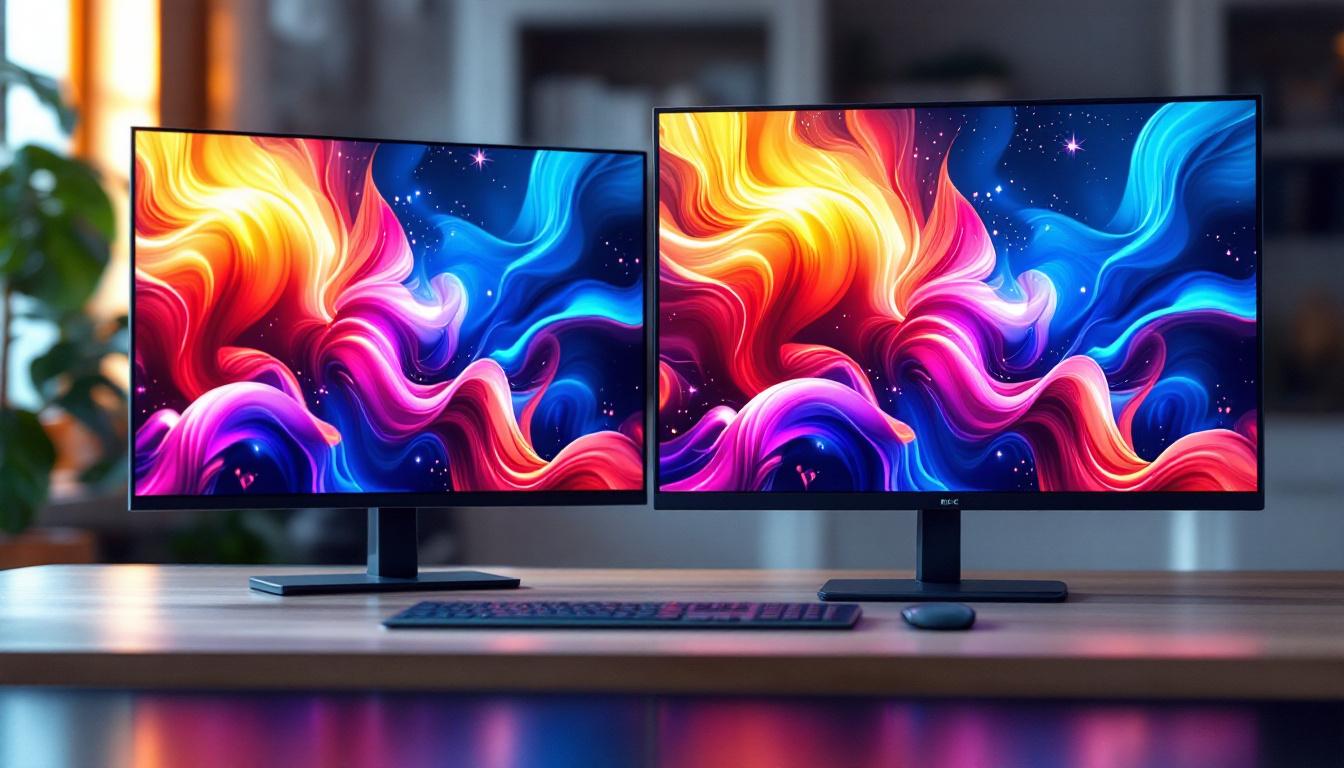In the world of gaming, the choice of monitor can significantly impact the overall experience. With advancements in technology, two types of displays have become prominent: LED and LCD monitors. Understanding the differences between these technologies is crucial for gamers looking to enhance their visual experience. This article delves into the nuances of LED and LCD monitors, particularly in the context of gaming.
Understanding LCD Technology
Liquid Crystal Display (LCD) technology has been a staple in the monitor market for years. It utilizes a liquid crystal solution sandwiched between two layers of glass or plastic. When an electric current is applied, these crystals align to allow varying degrees of light to pass through, creating images on the screen. This innovative approach has revolutionized how we view digital content, making screens lighter and more energy-efficient compared to older technologies like cathode ray tubes (CRTs).
How LCD Works
LCD monitors rely on a backlight to illuminate the display. Traditionally, this backlight was provided by cold cathode fluorescent lamps (CCFLs). However, modern LCDs often use LED backlighting, which leads to the term “LED LCD” monitors. The combination of liquid crystals and LED backlighting allows for brighter displays and improved energy efficiency. This advancement not only enhances the overall visual experience but also contributes to a longer lifespan for the monitor, as LEDs are known for their durability and lower heat output.
Advantages of LCD Monitors
One of the primary advantages of LCD monitors is their affordability. They are generally less expensive than their LED counterparts, making them a popular choice among budget-conscious gamers. Additionally, LCD monitors tend to be lighter and thinner, allowing for easier transport and setup. This portability is particularly beneficial for users who frequently move their setups, such as students or professionals who attend conferences and presentations.
Moreover, LCD monitors often offer good color reproduction and clarity, which can enhance the gaming experience. They are particularly effective for games that rely on vibrant visuals and detailed graphics. The technology also supports various resolutions, from standard HD to 4K, catering to a wide range of user preferences. Furthermore, many LCD monitors come equipped with features like anti-glare coatings and adjustable stands, providing users with a comfortable viewing experience regardless of their environment. As technology continues to evolve, LCD monitors are also integrating advanced features like adaptive sync technologies, which help eliminate screen tearing and provide smoother gameplay, making them an even more attractive option for gamers and multimedia enthusiasts alike.
Exploring LED Technology
Light Emitting Diode (LED) technology is often discussed in conjunction with LCD, as it serves as the backlighting source for many modern displays. However, LED monitors can also refer to displays that utilize organic LEDs (OLED), which function differently from traditional LCDs. This distinction is important as it highlights the versatility and advancements in display technology, allowing consumers to choose based on their specific needs and preferences.
How LED Works
LED monitors use diodes that emit light when an electric current passes through them. This technology allows for more precise control of brightness and color, resulting in deeper blacks and more vibrant colors. Unlike LCDs, which rely on a separate backlight, OLED displays emit their own light, eliminating the need for a backlight altogether. This self-emissive property not only enhances color accuracy but also contributes to a thinner and more lightweight design, making OLED screens ideal for sleek, modern devices.
Advantages of LED Monitors
One of the standout features of LED monitors is their superior contrast ratio. The ability to turn off individual pixels leads to true blacks, enhancing the overall visual experience. This is particularly beneficial in gaming scenarios where dark scenes are prevalent. Furthermore, the high dynamic range (HDR) capabilities of many LED monitors allow for a broader spectrum of colors and brightness levels, making images appear more lifelike and immersive.
Additionally, LED monitors often boast faster response times, which can reduce motion blur during fast-paced gaming. This responsiveness is crucial for competitive gamers who require precision and clarity in their visuals. Beyond gaming, these monitors are also favored by graphic designers and video editors who rely on accurate color representation and quick refresh rates to ensure their work is displayed as intended. The energy efficiency of LED technology is another significant advantage, as it consumes less power compared to traditional display technologies, making it an environmentally friendly choice for consumers looking to reduce their carbon footprint.
Key Differences Between LED and LCD Monitors
While both LED and LCD monitors have their merits, several key differences set them apart. Understanding these differences can help gamers make informed decisions when selecting a monitor.
Brightness and Color Accuracy
LED monitors typically offer higher brightness levels compared to traditional LCD monitors. This increased brightness can enhance visibility in well-lit environments, making it easier to enjoy gaming sessions without straining the eyes. Furthermore, LED technology allows for better color accuracy and a wider color gamut, providing a more immersive gaming experience. The ability of LED monitors to produce deeper blacks and more vibrant colors can significantly elevate the visual quality of games, particularly those with rich graphics and intricate details. Gamers often find that this enhanced color performance not only improves gameplay but also contributes to a more engaging and lifelike atmosphere.
Energy Efficiency
Energy efficiency is another area where LED monitors excel. They consume less power than traditional LCDs, making them a more environmentally friendly option. This efficiency can also translate into lower electricity bills over time, which is an important consideration for gamers who spend long hours in front of their screens. Additionally, many LED monitors come equipped with features such as automatic brightness adjustment, which further optimizes energy consumption based on ambient lighting conditions. This not only helps in reducing energy costs but also extends the lifespan of the monitor, ensuring that gamers can enjoy their investment for years to come without the need for frequent replacements. As the gaming community becomes increasingly aware of sustainability, the choice of an energy-efficient monitor can also reflect a commitment to eco-friendly practices.
Gaming Performance: Which is Better?
When it comes to gaming performance, the choice between LED and LCD monitors often depends on individual preferences and specific gaming needs. Factors such as refresh rates, response times, and resolution play a significant role in determining which type of monitor is better suited for gaming.
Refresh Rates and Response Times
Refresh rates refer to the number of times a monitor updates its image per second, measured in hertz (Hz). Higher refresh rates result in smoother visuals, which can be particularly beneficial in fast-paced games. LED monitors often come with higher refresh rates, making them a popular choice among competitive gamers.
Response time, on the other hand, measures how quickly a pixel can change from one color to another. LED monitors generally have faster response times, reducing motion blur and ghosting effects. This is crucial for gamers who require quick reflexes and precise timing.
Resolution and Screen Size
Resolution refers to the number of pixels displayed on the screen, impacting the clarity and detail of the visuals. Both LED and LCD monitors are available in various resolutions, including Full HD (1920×1080), Quad HD (2560×1440), and 4K (3840×2160). When choosing a monitor, gamers should consider their graphics card capabilities and the resolution that best suits their gaming preferences.
Screen size is another important factor. Larger screens can provide a more immersive experience, but they also require more desk space. Gamers should balance their desire for a larger display with the practicalities of their gaming setup.
Considerations for Choosing a Monitor
Selecting the right monitor for gaming involves several considerations beyond just LED vs. LCD technology. Several factors can influence the decision-making process.
Budget Constraints
Budget is often the most significant factor when choosing a monitor. LED monitors tend to be more expensive than traditional LCDs, so it’s essential to establish a budget before starting the search. Understanding the features that matter most can help prioritize spending.
Gaming Genre Preferences
The type of games played can also influence the choice of monitor. Fast-paced shooters may benefit from higher refresh rates and faster response times, making LED monitors a more suitable option. Conversely, gamers who enjoy slower-paced titles may find that an LCD monitor meets their needs without compromising on quality.
Future Trends in Monitor Technology
As technology continues to evolve, the future of gaming monitors looks promising. Innovations in display technology are paving the way for even better gaming experiences.
Advancements in OLED Technology
OLED technology is gaining traction in the gaming monitor market. With its ability to deliver exceptional contrast and color accuracy, OLED displays are becoming a preferred choice for high-end gaming. As production costs decrease, it is likely that OLED monitors will become more accessible to a broader audience.
Adaptive Sync Technologies
Adaptive sync technologies, such as NVIDIA’s G-Sync and AMD’s FreeSync, are also shaping the future of gaming monitors. These technologies help eliminate screen tearing and stuttering by synchronizing the monitor’s refresh rate with the graphics card’s output. As more monitors incorporate these features, gamers can expect smoother gameplay and enhanced visual fidelity.
Conclusion
In conclusion, the choice between LED and LCD monitors for gaming ultimately depends on individual preferences, budget, and gaming habits. Both technologies offer distinct advantages and disadvantages, making it essential for gamers to weigh their options carefully. By understanding the nuances of each type of monitor, gamers can make informed decisions that enhance their gaming experience.
As technology continues to advance, staying informed about the latest developments in monitor technology will ensure that gamers can enjoy the best possible visuals and performance. Whether opting for an LED or LCD monitor, the right choice can make all the difference in achieving an immersive and enjoyable gaming experience.
Discover the Future of Gaming with LumenMatrix
Ready to elevate your gaming experience with the latest in LED display technology? Look no further than LumenMatrix, a pioneer in crafting immersive visual experiences that bring your games to life. From the comfort of your home to the intensity of an esports arena, our range of LED display solutions, including Indoor and Outdoor LED Wall Displays, Vehicle LED Displays, and more, are designed to deliver unparalleled clarity and performance. Embrace the future of gaming and check out LumenMatrix LED Display Solutions today to see how we can transform your gaming setup into a portal to other worlds.


